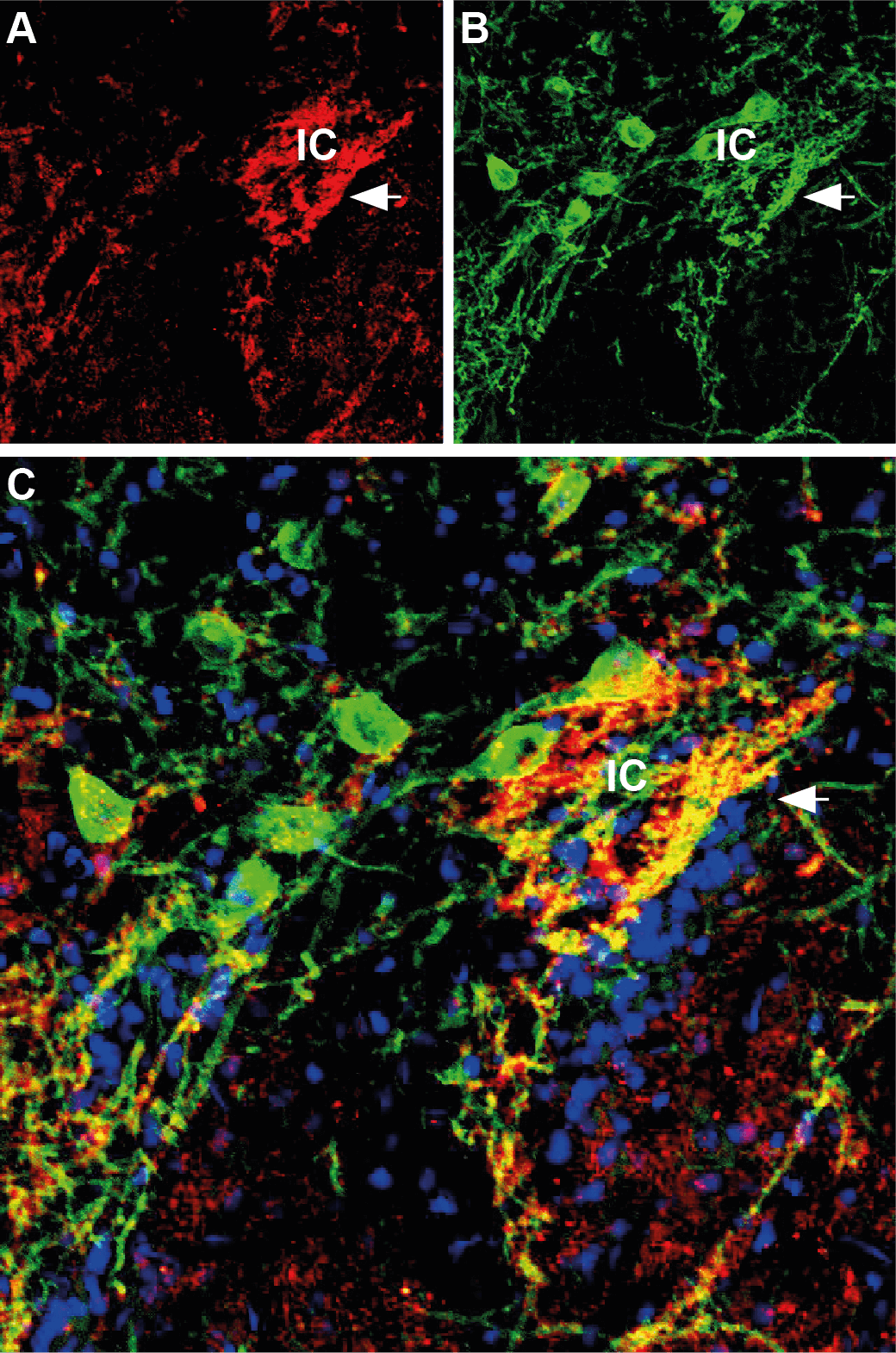Overview
- Peptide QPSQDELKDNTTVFTR(C), corresponding to amino acid residues 28-43 of rat GABRA1 (Accession P62813). Extracellular, N-terminus.
- Rat and mouse brain lysates and human SH-SY5Y cell lysates (1:400-1:2000).
 Western blot analysis of rat brain (lanes 1 and 4), mouse brain (lanes 2 and 5) membranes and human brain neuroblastoma (SH-SY5Y) (lanes 3 and 6) cell lysate:
Western blot analysis of rat brain (lanes 1 and 4), mouse brain (lanes 2 and 5) membranes and human brain neuroblastoma (SH-SY5Y) (lanes 3 and 6) cell lysate:1-3. Guinea pig Anti-GABA(A) α1 Receptor (extracellular) Antibody (#AGA-001-GP), (1:400).
4-6. Guinea pig Anti-GABA(A) α1 Receptor (extracellular) Antibody, preincubated with GABA(A) α1 Receptor (extracellular) Blocking Peptide (#BLP-GA001).Following a broad screen of secondary antibodies, the following were used for this application:
Western blot analysis:
#106-035-006 (Jackson ImmunoResearch)
#A7289 (Sigma)
- Rat brain sections.
GABA (γ-aminobutyric acid) is the major inhibitory neurotransmitter in the brain. Its production, release, reuptake, and metabolism all occur in the nervous system.1
The GABA transmitter interacts with two major types of receptors: ionotropic GABAAreceptors (GABAAR) and metabotropic receptors (GABABR). GABAARs belong to the ligand-gated ion channel superfamily.2 GABA inhibits the activity of signal-receiving neurons by interacting with the GABAA receptor on these cells.3 Binding of GABA to its GABAA receptor results in conformational changes that open a Cl-channel, producing an increase in membrane conductance that results in inhibition of neural activity.2
GABAARs are heteropentamers, in which all five subunits contribute to pore formation. To date, eight subunit isoforms have been cloned:α, β, γ, δ, ε, π, θ, and ρ.1 Six α subunit isoforms have been found to exist in mammals (α1-α6). In most cases, native GABAA receptors consists of 2α, 2β, and 1δ subunits. The α subunit is the most common and is expressed ubiquitously. It determines the affinities of GABAARs for allosteric ligands.
Each subtype has a unique regional expression in the brain, and individual neurons often express multiple subtypes.4 The α1 subunit is highly expressed in adulthood while the α2 subunit is highly expressed very early in rat brain development. Failure to complete the normal transition between the α-subunits that are highly expressed in early development (α2, α3, and α5) and those expressed in adulthood (α1) is suggested to play a major role in the development of temporal lobe epilepsy.5
Application key:
Species reactivity key:

Multiplex staining of Synapsin-2 and GABA(A) α1 Receptor in rat striatum.Immunohistochemical staining of immersion-fixed, free floating rat brain frozen sections using rabbit Anti-Synapsin II (SYN2) Antibody (#ANR-015), (1:300) and Guinea pig Anti-GABA(A) α1 Receptor (extracellular) Antibody (#AGA-001-GP), (1:600). A. Synapsin-2 staining (red) appears in Islands of Calleja (IC), (arrow). B. GABRA1 (green) is also detected in Islands of Calleja and in adjacent neurons. C. Merge of the two images demonstrates colocalization in IC while adjacent GABRA1 positive neurons do not express Synapsin-2. Cell nuclei are stained with DAPI (blue).
